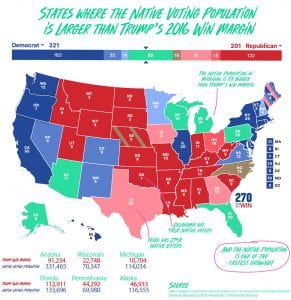Recently our coursework has been covering community-based approaches to archaeology. One subject in particular has come up repeatedly: Indigenous Archaeology. So, what is it? Indigenous archaeology arose from the post-processual movement of the 1980s to challenge Anglocentric interpretations of the archaeological record. This practice aims to interpret the record through an Indigenous lens by merging indigenous values with Western scientific practice (Torres 2024). In practice, this involves collaboration with indigenous communities, integration of traditional knowledge, an emphasis on decolonization, and community-centric goals (Lyons et al. 2010).
One example of indigenous archaeology from our class readings is the Arviat Archaeology and Oral History Project. In their article “Person, Place, Memory, Thing: How Inuit Elders are Informing Archaeological Practice in the Canadian North,” Lyons et al. discuss how they collaborated with Inuit Elders to synthesize different forms of knowledge. Traditional knowledge was integrated into their research to aid in the interpretation of the archaeological record. Oral histories and “map biographies” were recorded to develop an indigenous perspective on the surrounding landscape and the people who have occupied it through time. The information produced in this project is used by the Elders to educate the youth in the community and preserve and transmit their cultural heritage.
Another example of indigenous archaeology is the Crow Archaeological Field Camp, a collaborative project between the Crow Nation and archaeologists (Schreiber 2011). This field school in Bighorn Canyon National Recreation Area utilizes ethnographic archaeology through the integration of Crow oral histories, and local Crow students benefit from educational outreach efforts. There is an emphasis on building partnerships and putting indigenous perspectives at the forefront of research.
Through legislation, indigenous archaeology is now being integrated into the cultural resource management processes in California. The AB52 amendment to CEQA (California Environmental Quality Act) created a new protected class referred to as “tribal cultural resources,” and these resources are determined by tribes rather than archaeologists (Torres 2024). The treatment of tribal cultural resources is decided through collaboration between tribes and government agencies. This amendment has led to the training of tribal monitors to safeguard resources. Tribes are already bringing traditional knowledge to the table, but now there is a necessity to train indigenous archaeologists.
For some time now, archaeologists and indigenous communities have been advocating for changes in the way archaeology is practiced. They want indigenous people to be able to take a more active role in the study of their history. Recent changes to CEQA and CalNAGPRA that empower tribes should be seen as part of a wider trend that aims to more fully include indigenous people in the field of archaeology and allow them to have more say in how their past is researched and preserved.
Indigenous archaeology is the future of archaeology in North America.
References Cited
Lyons, Natasha, Peter Dawson, Matthew Walls, Donald Uluadluak, Louis Angalik, Mark Kalluak, Philip Kigusiutuak, et al. 2010 “Person, Place, Memory, Thing: How Inuit Elders are Informing Archaeological Practice in the Canadian North.” Journal Canadien D’Archeologie 34: 1-31.
Schreiber, Laura L., Kelly M. Branam, Judson Byrd Finley, Rebecca A. Nathan, Katherine L. Burnett, Maureen P. Boyle, Dawn M. Rutecki, et al. 2011. “Crow Rediscover a Piece of Their Homeland.” Archaeological Practice: A Journal of the Society for American Archaeology.
Torres, John A. 2024. Indigenous Archaeology in Practice. SAA Webinar Series.





 Arch Street Project received for the unexpected discovery of hundreds of human burials, members of the Pennsylvania General Assembly were made aware of certain complicating factors that must be dealt with when human remains are inadvertently discovered. The Center for Rural Pennsylvania (CRP) is a bipartisan legislative agency that serves the Pennsylvania General Assembly in helping to create rural policy. In 2019, CRP tasked Dr. Palmiotto with providing a comprehensive assessment of Pennsylvania legislation related to human remains and burials, specifically those of archaeological concern, such as abandoned or forgotten cemeteries, or isolated and unmarked burials. Although there are federal laws regarding the discovery of archaeological remains, those laws only apply to projects that include federal involvement. In the state of Pennsylvania, there is no state-level legislation that adequately addresses the inadvertent discovery of archaeological remains on state owned, state-funded, state-assisted projects, or private property.
Arch Street Project received for the unexpected discovery of hundreds of human burials, members of the Pennsylvania General Assembly were made aware of certain complicating factors that must be dealt with when human remains are inadvertently discovered. The Center for Rural Pennsylvania (CRP) is a bipartisan legislative agency that serves the Pennsylvania General Assembly in helping to create rural policy. In 2019, CRP tasked Dr. Palmiotto with providing a comprehensive assessment of Pennsylvania legislation related to human remains and burials, specifically those of archaeological concern, such as abandoned or forgotten cemeteries, or isolated and unmarked burials. Although there are federal laws regarding the discovery of archaeological remains, those laws only apply to projects that include federal involvement. In the state of Pennsylvania, there is no state-level legislation that adequately addresses the inadvertent discovery of archaeological remains on state owned, state-funded, state-assisted projects, or private property.





